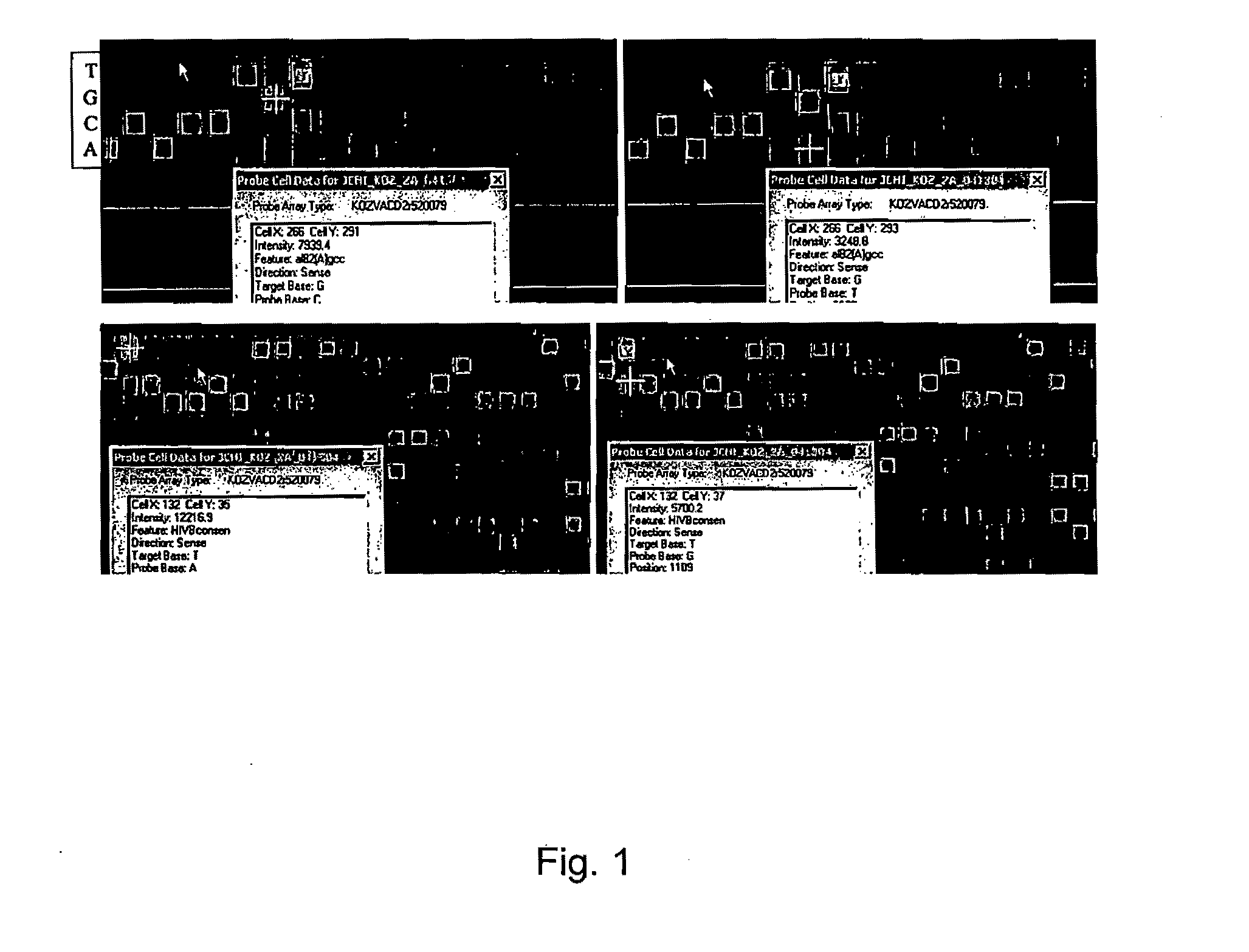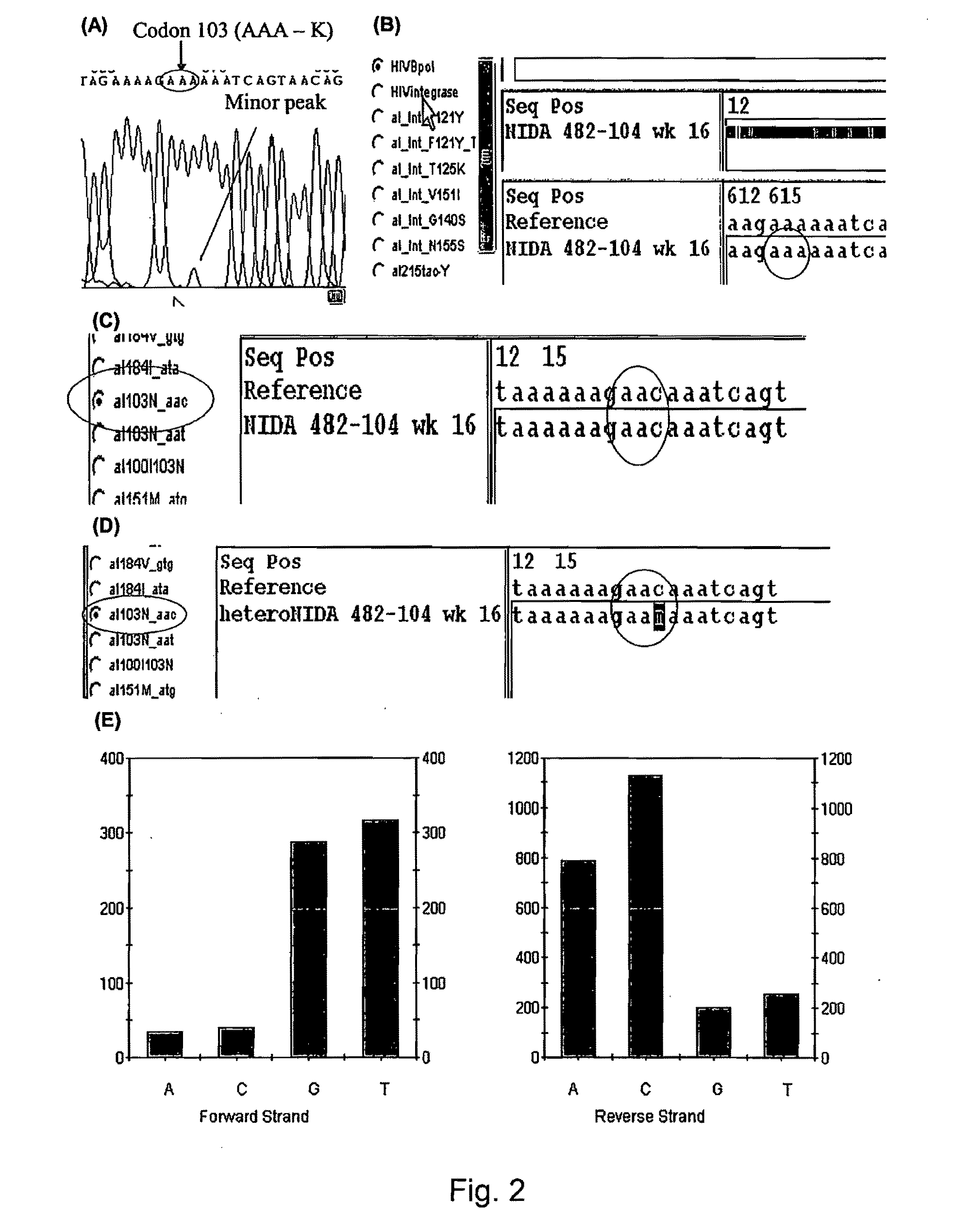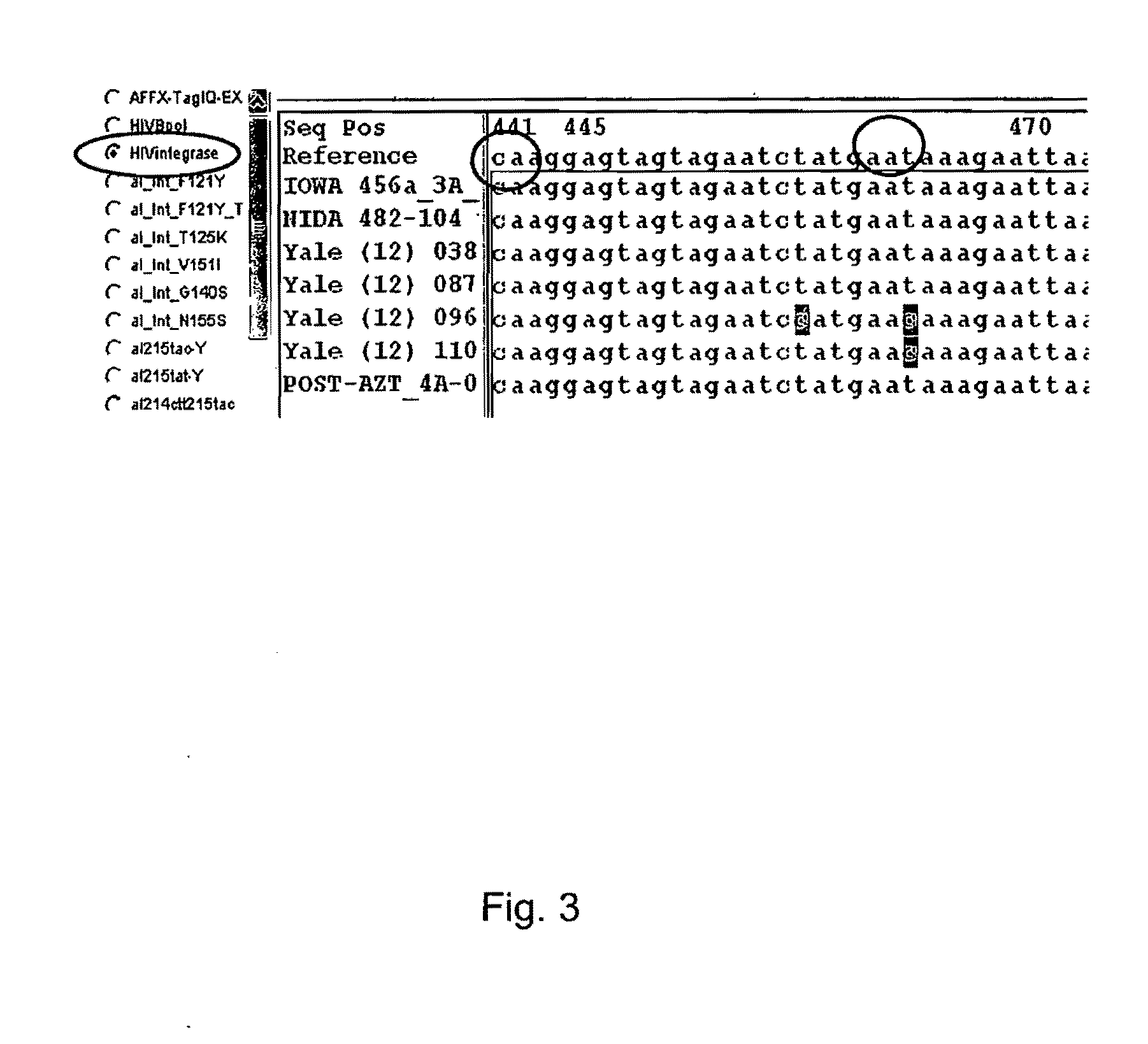HIV and Hepatitis C Microarray to Detect Drug Resistance
a technology of hepatitis c and microarrays, applied in the field of hepatitis c microarrays to detect drug resistance, can solve the problems of antiviral therapy failure, large dna sequencing, and no longer detectable traditional genotypic mutation assays for low abundance viral variants
- Summary
- Abstract
- Description
- Claims
- Application Information
AI Technical Summary
Benefits of technology
Problems solved by technology
Method used
Image
Examples
experimental examples
[0081]The invention is further described in detail by reference to the following experimental examples. These examples are provided for purposes of illustration only, and are not intended to be limiting unless otherwise specified. Thus, the invention should in no way be construed as being limited to the following examples, but rather, should be construed to encompass any and all variations which become evident as a result of the teaching provided herein.
The materials and methods used in the experimental examples are now described.
example 1
HIV and HCV Microarray
[0082]To interrogate sequences of HIV and HCV, an array was designed according to the instructions in the GeneChip® CustomSeq® Custom Resequencing Array Design Guide (part number 701263 Rev. 4 available from Affymetrix, Santa Clara, Calif.). The array has features that are 8.times.8 microns in size. The array design comprises 25-nucleotide nucleic acid subsequences derived from the sequences depicted by SEQ ID NOS:1-113.
example 2
Detection of Low Abundance Viral Sequence in a Mixture of Low-Abundance and High-Abundance Sequences
[0083]The array described in Example 1 was used to detect infrequently represented variants in a mixture of viral variants. PCR amplicons were generated from a DNA template containing the wild type HIV protease sequence and a DNA template containing a HIV protease sequence with a mutation at codon 82 (Taq DNA Polymerase; primer 1—CAGAGCAGACCA GAGCCAAC (SEQ ID NO:114); primer 2—AATGCTTTTATTTTTTCTTCTGTCAATGGC (SEQ ID NO: 115); 35 cycles 94.degree.C. for 30 sec, 50.degree.C. for 30 sec, 72.degree.C. for 60 sec; 1 cycle 72.degree.C. for 10 min; see also Nguyen, 2003, Aids Research and Human Retroviruses, 19:925-928). PCR amplicons were used to create a mixture of amplicons containing 99% of the wild type HW protease sequence and 1% of the mutant protease sequence having a mutation at codon 82. The mixture of PCR amplicons was hybridized to the array according to the manufacturer's instruc...
PUM
| Property | Measurement | Unit |
|---|---|---|
| Electrical resistance | aaaaa | aaaaa |
Abstract
Description
Claims
Application Information
 Login to View More
Login to View More - R&D
- Intellectual Property
- Life Sciences
- Materials
- Tech Scout
- Unparalleled Data Quality
- Higher Quality Content
- 60% Fewer Hallucinations
Browse by: Latest US Patents, China's latest patents, Technical Efficacy Thesaurus, Application Domain, Technology Topic, Popular Technical Reports.
© 2025 PatSnap. All rights reserved.Legal|Privacy policy|Modern Slavery Act Transparency Statement|Sitemap|About US| Contact US: help@patsnap.com



